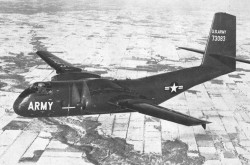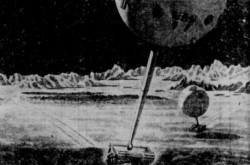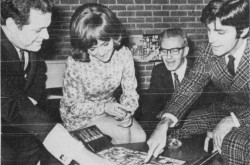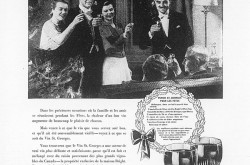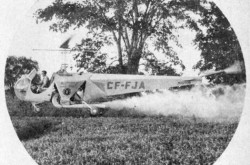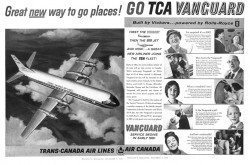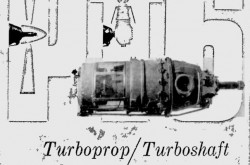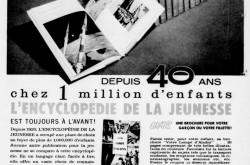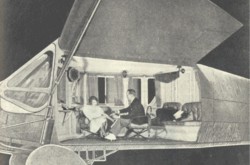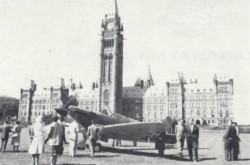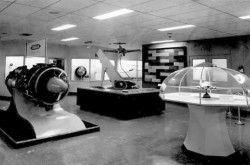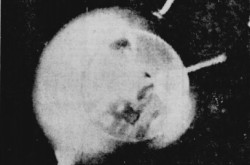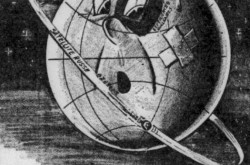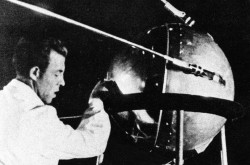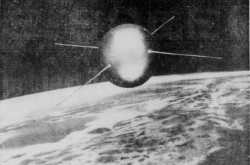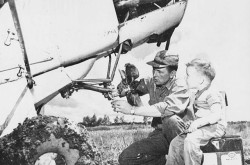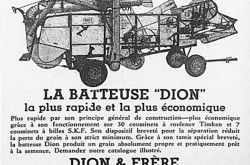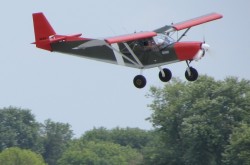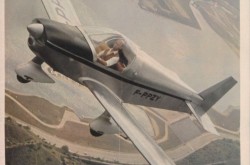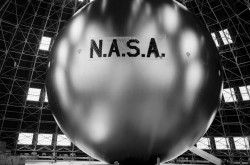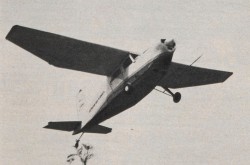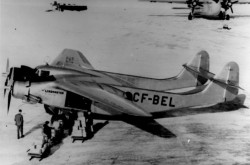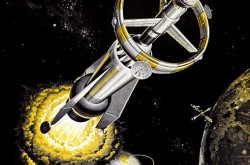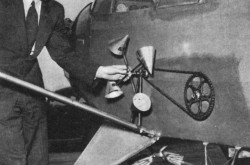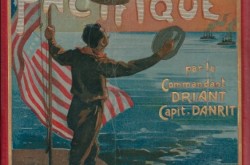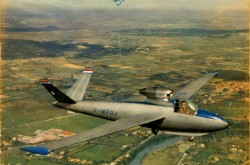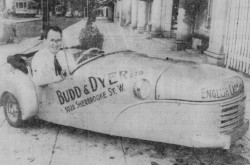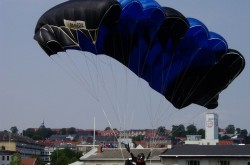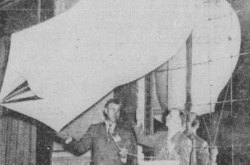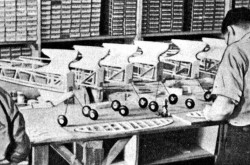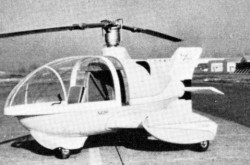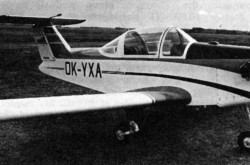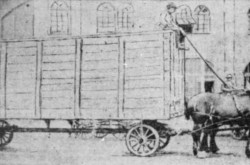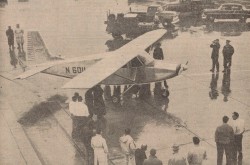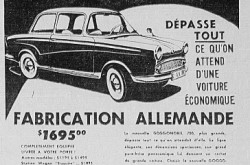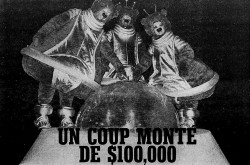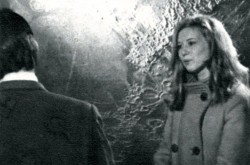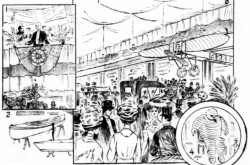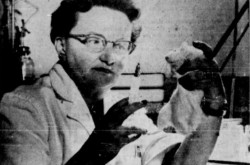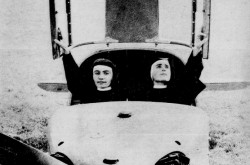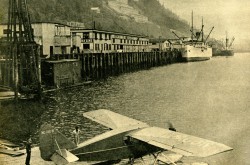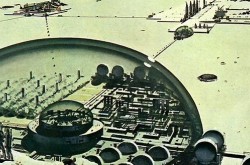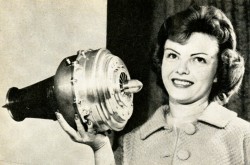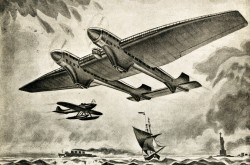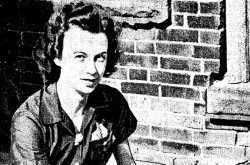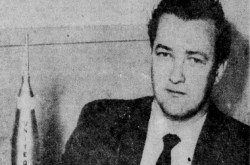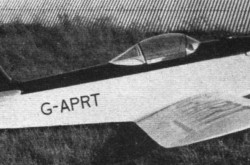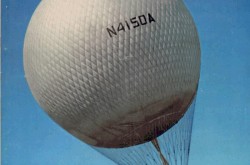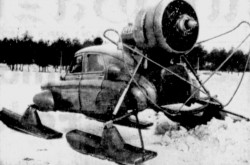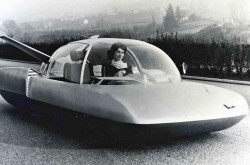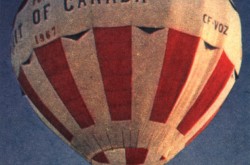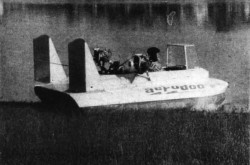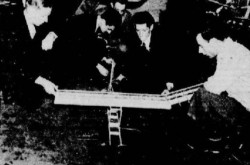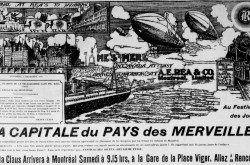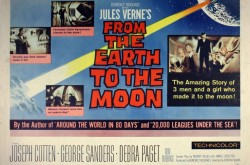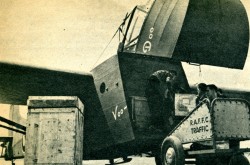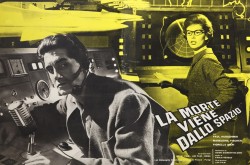“A prophet is not without honour except in his own country.” – The Hungarian Canadian Louis Gyory and the unfulfilled future of his electric and hybrid vehicles, part 4

Would you believe that we have finally reached the point in our story where we will meet the vehicle presented at the very beginning of the 1st part of this article, namely the sophisticated / stylish 6-wheeled experimental hybrid automobile completed in the fall of 1979 by the American firm Briggs & Stratton Corporation of Milwaukee, Wisconsin, one of planet Earth’s largest manufacturers of small gasoline engines, engines used on snowmobiles, lawnmowers, industrial equipment and other applications?
And yes, hello to you too, my reading friend. Sorry.
And no, that vehicle was not the first hybrid automobile put together in the United States around that time. One only needed to mention the General Motors XP-512H, XP-883 and Stir-Lec 1 of 1969 or the General Motors / Buick Skylark turned into a hybrid in 1973.
Mind you, one could also mention the two Van Hool / ACEC Électrobus city buses completed in Belgium in 1964, or the Japanese Toyota Supōtsu 800 / Sports 800 sports car turned into a hybrid in 1977, a hybrid powered by an electric motor and… a gas turbine, I kid you not, or the Italian FIAT 131 mid-size family automobile turned into a hybrid in 1979, but back to Briggs & Stratton’s prototype.
A young couple posing in front of a large grocery store with the experimental hybrid automobile completed by Briggs & Stratton Corporation of Milwaukee, Wisconsin. Al Fleming, “6-wheeler attracts the eye.” Wichita Beacon, 7 March 1980, 4C.
The sports coupe in question, seemingly known as the Hybrid, was unveiled in November 1979. Able to carry a typical family (mommy, daddy, their 2 kiddies and 2 bags of groceries), it could reach speeds of almost 90 km/hr (55 mph), which meant that it could be driven on a highway, 55 mph being the speed limit on American highways at the time.
This being said (typed?), the new prototype needed nearly 30 seconds to achieve that highway cruising speed, and this with both its gasoline engine and electric motor running. Yours truly can imagine a lot of honking from irate highway users following our non-speedy sports coupe.
Mind you, the driver of the Hybrid had to contend with the clickety clicks of the electrical motor and / or THE RACKET PRODUCED BY, err, sorry, the gasoline engine.
Incidentally, the gasoline engine and electric motor could be run individually or together. The switch from one combination to the other was done manually, by the driver.
Recharging the 12 lead-acid batteries took approximately 8 hours, using an ordinary 115- or 120-volt outlet.
Would you believe that, when operating as a hybrid, Briggs & Stratton’s creation proved, according to the latter, able to cover a distance of 62 or so kilometres with a single litre of gasoline? In other words, it consumed less than 1.6 litres per 100 kilometres (174 or so miles per imperial gallon / 145 or so miles per America gallon). Wah! If true.
The vehicle’s rechargeable batteries allowed it to cover a distance of up to 95 or so kilometres (60 or so miles). Using only its gasoline engine, it could cover a distance of up to 450 or so kilometres (280 or so miles).
If truth be told, Briggs & Stratton’s prototype was a Frankencar. Its chassis was for all intent and purposes that of a Marathon C-360 electric delivery van, modified to receive a dozen batteries. The manual transmission, front suspension, steering gear and rear axle were those of a Ford Pinto. The windshield was that of a West German Volkswagen Scirocco sport compact hatchback automobile while the side doors were those of a West German Volkswagen Rabbit compact family automobile.
Incidentally, one of the rear axles of the Hybrid was a structural component of the battery tray. The plan was to lock it in and out to facilitate the removal of said tray. The fact that a second tray was never built made it impossible to test that idea. In any event, that arrangement made driving in mud or snow somewhat difficult, as the vehicle might have gotten stuck quite often.
The maker of the onboard computer which kept tabs on various things has yet to be identified. Sorry.
The custom-made fibreglass bodywork of the vehicle and many of its internal elements were made by Brooks Stevens Incorporated, a well-known American custom coachbuilder best known for its Excalibur sports car, an exoticar produced between 1963 and 1997 which was based on the Mercedes-Benz Typ SSK, a legendary German sports automobile produced between 1928 and 1932.
Design and / or construction of Briggs & Stratton’s vehicle seemingly began in 1977.
That prototype was on display at the San Francisco Auto Show, in… San Francisco, California, in November 1979, at the Los Angeles Auto Show, in… Los Angeles, California, in January 1980, and at the Design Engineering Show, in… Design, sorry, sorry, in Chicago, Illinois, in April 1980. It attracted a lot of attention in all three locations.
The vehicle was also demonstrated in April 1980, at an Earth Day event held in Washington, District of Columbia, by the United States Department of Energy.
If truth be told, said prototype visited several, if not many American states in 1979-80. It garnered attention at every stop.
One of those stops, in early April 1980, was at the Jet Propulsion Laboratory of the National Aeronautics and Space Administration, in La Cañada Flintridge, California. Several engineers involved in a high priority United States Department of Energy electric vehicle development project, including the test and evaluation manager of that project, Theodore W. Price, wanted to kick its tires. They were impressed.
Incidentally, by mid-April 1980, the staff of Briggs & Stratton had modified the gasoline engine and fuel system of the prototype so that it could burn 100 % pure drinking alcohol / ethyl alcohol / grain alcohol / ethanol rather than gasoline.
And yes, my reading friend, ethanol is indeed a renewable fuel, readily available in the United States, because it could be distilled from common agricultural products like corn / maize and wheat.
In June 1980, while driving our finely tuned (and boosted?) prototype, a well-known American automobile racing driver maintained an average speed of 114.27 km/hr (71.01 mph) over a distance of 32.2 or so kilometres (20 miles) at the Pocono International Raceway, near Long Pond, Pennsylvania. John Sherman “Johnny / Lone Star JR” Rutherford, III, set several official American speed records for hybrid vehicles that day, including a 115.14 km/hr (71.55 mph) all out speed record.
And no, I cannot say if the fuel used that day was ethanol or gasoline. Sorry.
Yours truly would be remiss if I did not point out that Briggs & Stratton’s prototype received favourable exposure over the months in well known American magazines like AutoWeek, Car and Driver and Motor Trend.
By the end of 1980, however, the posh yellow prototype was in mothballs. You see, Briggs & Stratton had never intended to produce that US $250 000 concept car built specifically for demonstration and publicity purposes, and this in the hope of igniting the interest of American automobile makers in producing hybrid automobiles of their own. Incidentally, that sum corresponded to more than $1 300 000 in 2024 currency.
Actually, it looked as if the American firm had also spent that sizeable sum as a way to advertise the new gasoline engine of its hybrid automobile, an engine of antiquated design it seemed, for use as the gasoline engine of future American hybrid vehicles.
If someone was to decide to produce Briggs & Stratton’s prototype, however, the firm seemed to think that a production vehicle would cost US $7 000 to US $10 000, sums which corresponded to between approximately $37 000 to $53 000 in 2024 currency.
Incidentally, an average American automobile cost US $7 600 or so in 1980, a sum which corresponded to between approximately $40 000 in 2024 currency
The Briggs and Stratton prototype went on display at an undetermined moment, in 1988 perhaps, in Briggs and Stratton’s Powerhouse Museum, located in its main facility.
Intrigued by that vehicle, an American author / noted automobile collector / comedian / television host mentioned in a March 2022 issue of our peripatetic blog / bulletin / thingee, James Douglas Muir “Jay” Leno, asked Briggs & Stratton if it could be made roadworthy so that he could present it, and drive it, in an episode of the American television series Jay Leno’s Garage. The firm (enthusiastically?) agreed to that request. Said episode, broadcasted in March 2020, can be viewed at
As of 2024, the prototype was still on display in the Powerhouse Museum, but back to the firm at the heart of this article.
A project Marathon Electric Vehicles was involved in, albeit indirectly, in 1983, was linked to a cheap, light, simple and deeply innovative automobile automatic transmission developed by Hugh Kerr, a former professor of mechanical engineering at the Royal Military College of Canada, in Kingston, Ontario, and founder of Ker-Train Systems Limited of Kingston.
You see, Kerr’s prototype was mounted on a C-360 operated by Transport Canada as part of an electric vehicle research project sponsored by the Department of Industry, Trade and Commerce.
Was the project in question the one mentioned in the 3rd part of this article, you ask, my attentive reading friend? Err, it may well have been. Good catch. I had not made the connection.
Was the Kerr transmission any good, you ask, again? Well, said transmission allowed that C-360 to reach a speed of 48 or so km/hr (30 or so mph) in the time it took a standard C-360 to reach a speed of 24 or so km/hr (15 or so mph).
Sadly enough, Kerr’s technology was apparently not adopted by major automobile manufacturers.
Even so, it is worth noting that Ker-Train Systems became Ker-Train Research Incorporated at some point. It was still in business as of 2024, in Kingston.
The same could not be said of Marathon Electric Vehicles, however. That firm might, I repeat might, have gone belly up in 1983. Its (last?) assets were auctioned off in late July 1984. Marathon Electric Vehicles was officially dissolved in late August 1987.
But what about Gyory, you ask, my concerned reading friend? A good question, as usual.
By 1986 at the latest, that gentleman was the owner of a farm near the Canada-United States border, in Elgin, Québec. To be more precise, he was raising a breed of cattle known as the Simbrah, a medium sized American breed derived from a Swiss breed, the Simmentaler Fleckvieh / Simmentaler / Fleckvieh, and an American breed, the Brahman, itself derived from cattle breeds and breeds of a South Asian (sub)species of cattle known as the zebu.
Mind you, Gyory might have begun his farming career as a chicken farmer, a line of work he might have kept when his cattle breeding career began.
That was all very nice, you state, my reading friend, but how did Gyory come to believe that his future lied with Simbrah cattle? Another good question. Even though Gyory spent many winters in Florida visiting farms and attending auctions, his big break came as a result of a year spent in Texas, the American state where the number of Simbrahs was growing the fastest.
When he returned to Québec, Gyory decided to buy a herd and bring it to Canada. Indeed, he was the first person in Québec to own and breed Simbrahs. Bringing that herd to Québec, and Canada, was not easy, however. There was a lot of paperwork to deal with, which is never fun.
Gyory’s 15 Simmentaler heifers arrived in Elgin in the spring of 1986. All of them had been artificially inseminated before making the trip. Eight of them gave birth in December, which appeared to be a good statistical result.
Mind you, in February 1986, I think, Gyory also imported a Simmentaler cow, Singletree MS Signal, and its 3-month-old calf, his first Simbrah, which he playfully called Zsa Zsa, presumably in honour of the well-known Hungarian American actress / socialite Zsa Zsa Gabor, born Gábor Sári.
The father of that calf was none other than CR Honcho 294L, quite possibly the most valuable Simbrah bull on planet Earth. Would you believe that this 1 600 or so kilogramme (3 500 or so pounds) Floridian bovine beauty was allegedly worth US $ 2 000 000, a sum which corresponded to more than $ 7 950 000 in 2024 currency. Wah!
Zsa Zsa caught the eye of several cattle breeders in August 1987. One of them bought a 10% share in that heifer for the measly sum of $ 10 000, a sum which corresponded to $ 23 400 or so in 2024 currency.
Unfortunately, yours truly was not able to find out what happened to Zsa Zsa after August 1987. Having said (typed?) this, a cow bearing that name later became very famous. The catch was that many Simbrah cows bore that name.
From the looks of it, Gyory’s efforts to breed cattle were not successful. You see, by the late 1980s, he was an importer of Hungarian wines living in South Carolina.
His Quebecer spouse having expressed a wish to be closer to her relatives, the couple moved to Noyan, Québec, near the Canada-United States border, in 1994. Gyory seemingly turned his South Carolinian property to a relative (son?) in exchange for a nominal sum of money.
Gyory and his spouse moved to Lacolle, Québec, another small municipality located near the Canada-United States border, in 2003.
And yes, during the 1990s and early 2000s, the idea of developing an affordable yet performing vehicle which did not consume a lot of gasoline stayed with him.

Louis Gyory showing the trunk of his green Dodge Neon compact automobile and the dozen 6-volt lead-acid batteries he had put therein to turn that vehicle into a hybrid automobile prototype, Lacolle, Québec. Johanne Latour, “Louis Gyory conçoit des véhicules hybrides dans son garage!” Le Canada Français, 19 January 2005, A-1.
In mid-2004, Gyory transformed a green Dodge Neon compact automobile into a hybrid by installing a dozen 6-volt marine-type lead-acid batteries in its trunk, with the help of an independent suspension system. To recharge those batteries, he simply had to plug the Neon into an ordinary 120-volt outlet.
The proud inventor claimed that his modified American vehicle could cover a distance of up to 725 or so kilometres (450 or so miles) without refueling – or recharging its batteries. It could allegedly cover a distance of 80 000 or so kilometres (50 000 or so miles) before its batteries needed to be replaced.

Louis Gyory and his incomplete hybrid utility vehicle prototype, Lacolle, Québec. Johanne Latour, “Louis Gyory conçoit des véhicules hybrides dans son garage!” Le Canada Français, 19 January 2005, A-30.
As 2004 turned into 2005, Gyory was working on a utility hybrid vehicle he hoped to complete by early 2006. That prototype would hopefully be able to consume no more than 5.7 or so litres of gasoline per 100 kilometres (50 or so miles per imperial gallon / 41.5 or so miles per American gallon). Gyory hoped that a production version of that vehicle would sell for about $ 16 000, a sum which corresponded to about $ 24 500 in 2024 currency.
To minimise cost, Gyory eschewed using the gasoline engine or brakes of his prototype to recharge its rechargeable batteries. He also stayed well clear of computerised systems.
Incidentally, I too would stay well clear of computers if I could. I do not like or trust those contraptions, and I am afraid the feeling is mutual. Anyway, let us move on but not, I hope, toward that day when artificial intelligences will become self aware and wipe out our species. (Hello, Skynet! Hello, Terminators!)
The firm which Gyory hoped would buy the rights to his design might have wanted to export said design to places like China and Eastern Europe, places where gasoline was expensive and where drivers did not think a lot about electric windows and air conditioning.
Sadly enough, the prototype in question was never put in production. Indeed, yours truly does not know if it was even completed. I doubt it was. You see, Gyory left this Earth in late March 2006, in Saint-Jean-sur-Richelieu, Québec. He was 80 years old.
And so ends our quest to uncover the story of Gyory’s electric and hybrid vehicles. I can only hope that you enjoyed the ride.
This writer wishes to thank the people who provided information. Any mistake contained in this article is my fault, not theirs.





































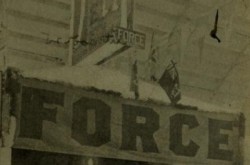
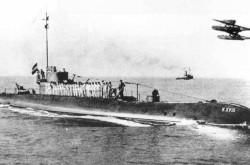
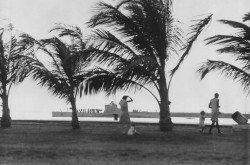
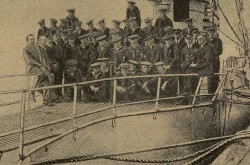
![A block of photographs showing some of the people involved in the bombing of beluga whales in the estuary and gulf of the St. Lawrence River. Anon., “La chasse aux marsouins [sic]. » Le Devoir, 15 August 1929, 6.](/sites/default/files/styles/thumbnail_7/public/2024-09/Le%20Devoir%2015%20aout%201929%20page%206.jpg?h=584f1d27&itok=TppdLItg)

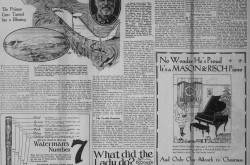

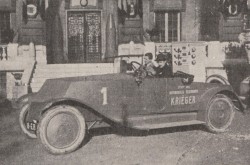
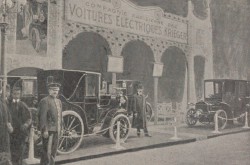

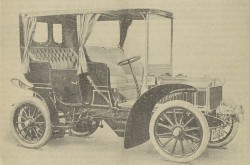


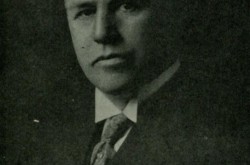
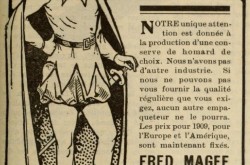
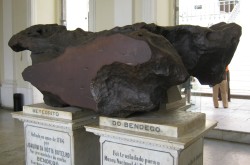
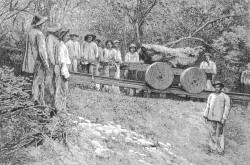
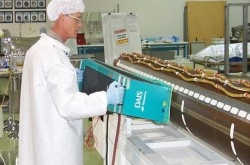
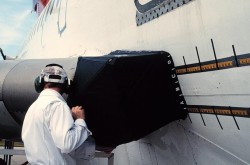
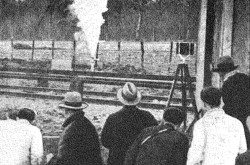
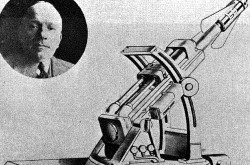
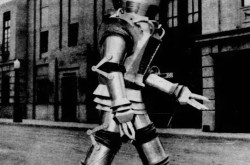

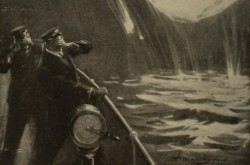
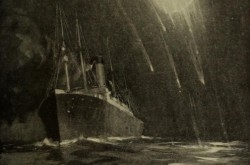
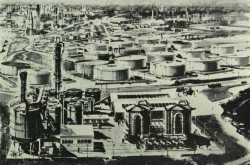
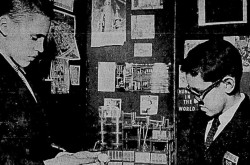
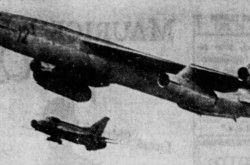
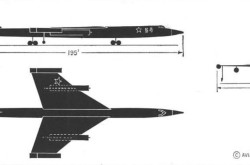
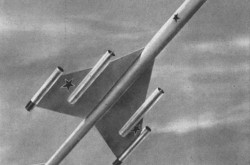

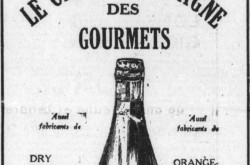
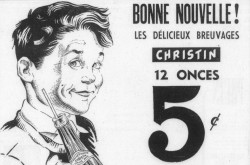

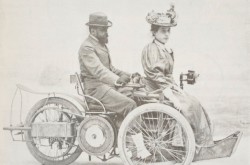
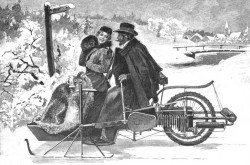

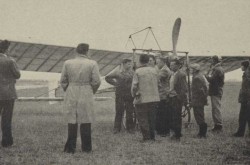
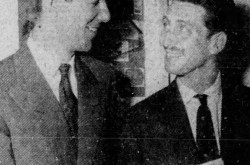
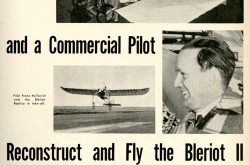
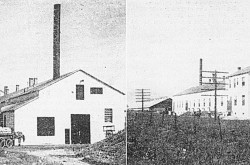

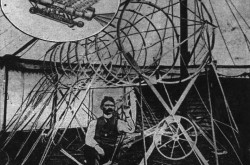

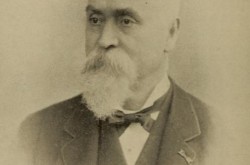
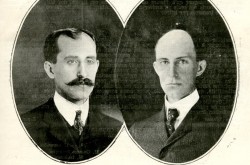
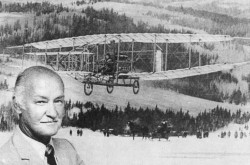
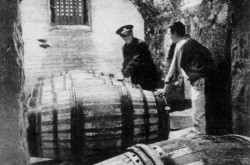
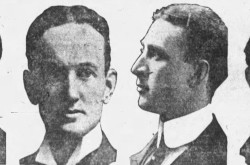
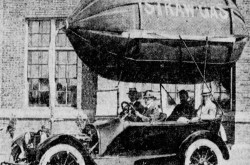

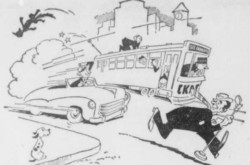
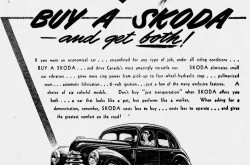
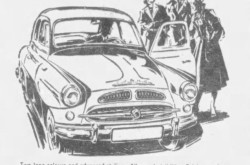
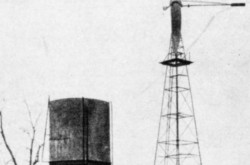
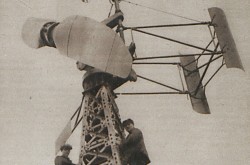
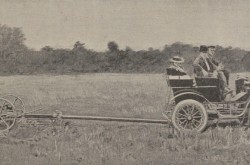

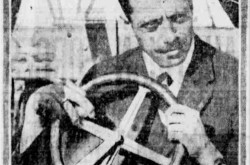

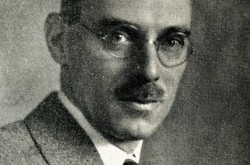
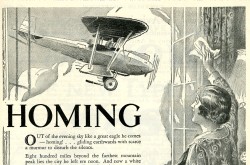

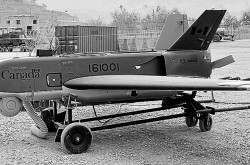


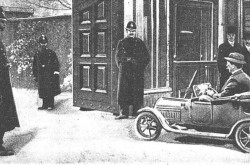
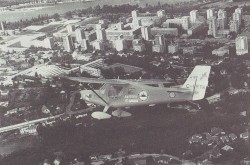
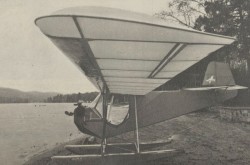
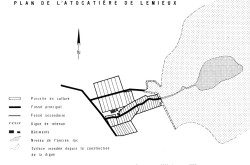

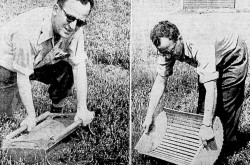
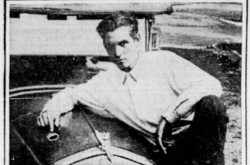
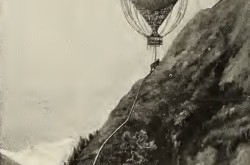


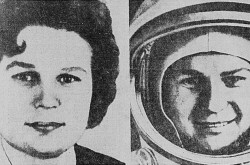
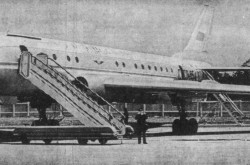
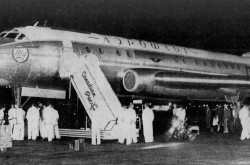
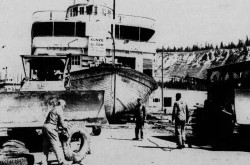
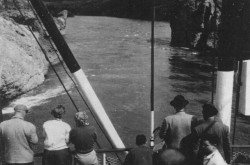
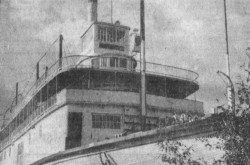
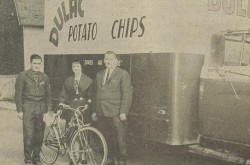
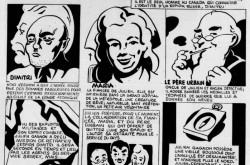
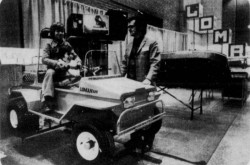

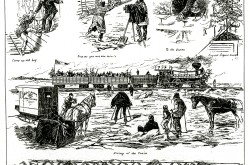
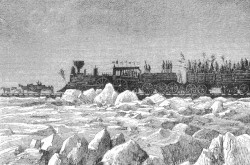
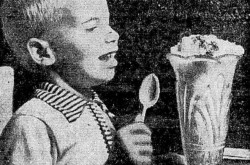
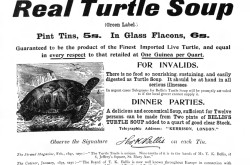


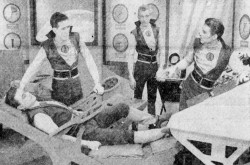

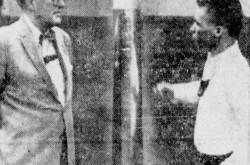


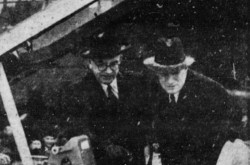
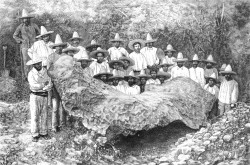
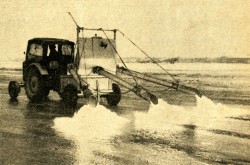

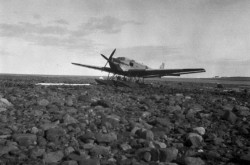

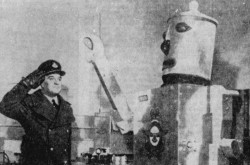
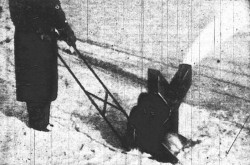


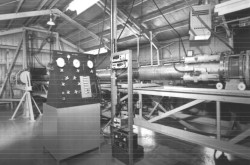

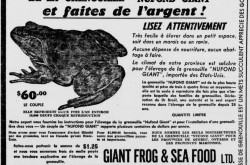
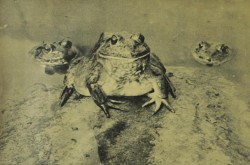

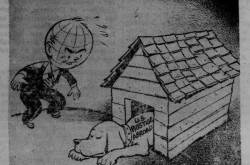
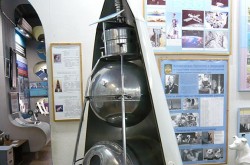



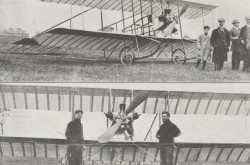


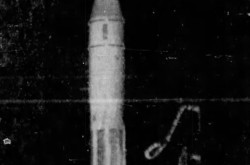
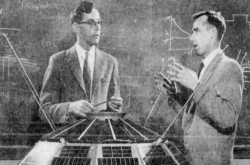
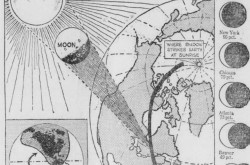

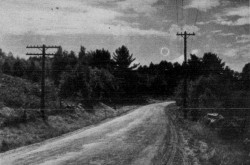





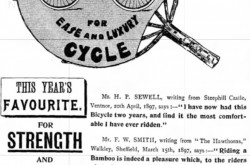
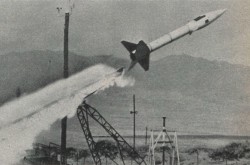
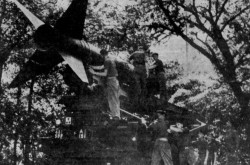
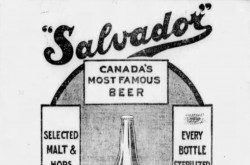
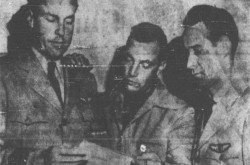
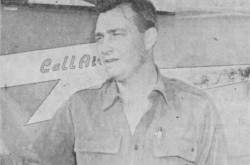
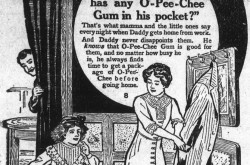

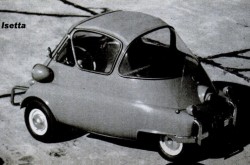
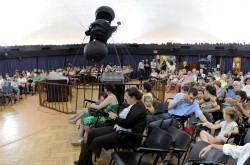
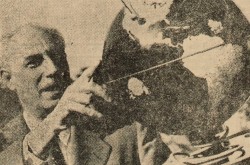
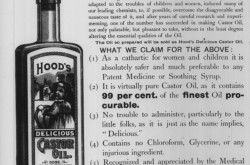
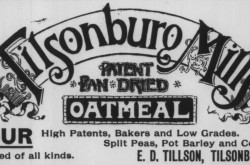




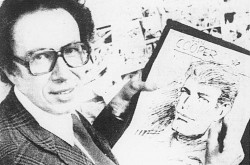
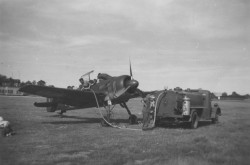

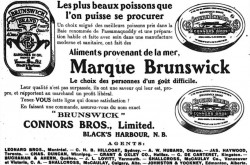
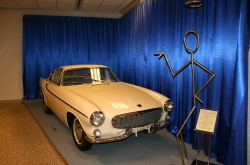

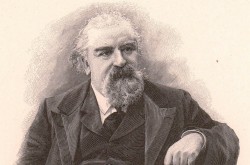


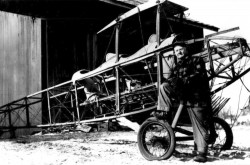

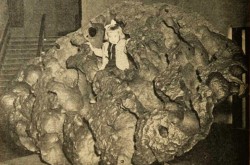
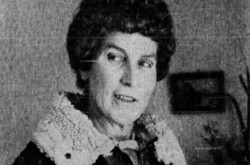

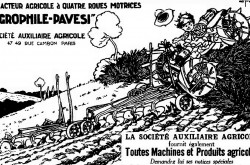
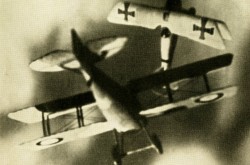

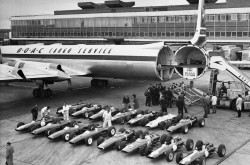
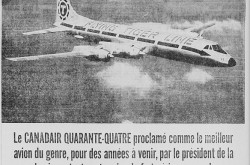


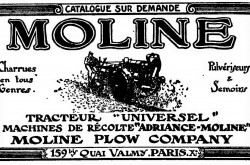
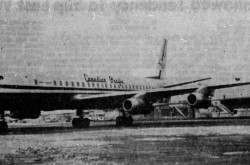
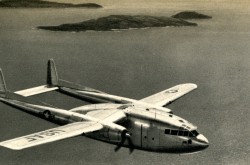
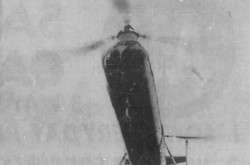

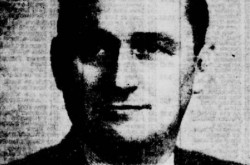
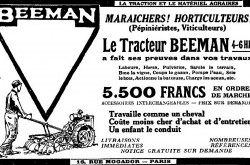
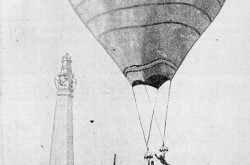

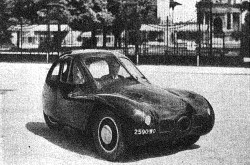
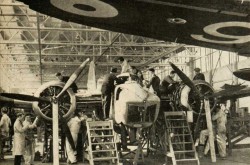


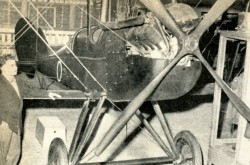
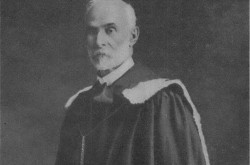
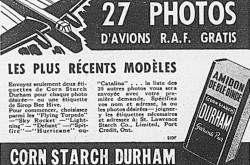
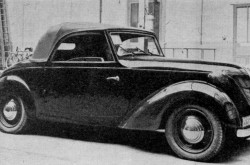

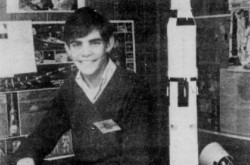

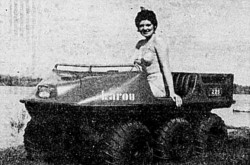
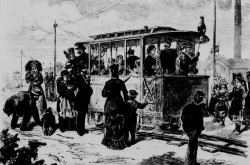
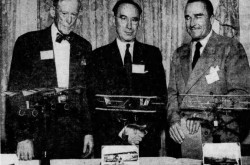
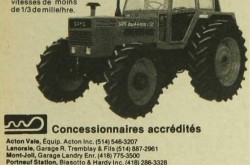



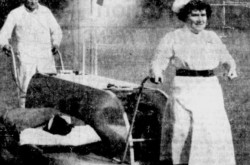

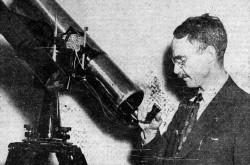

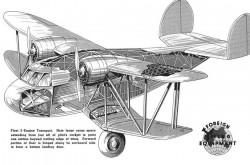
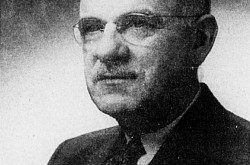
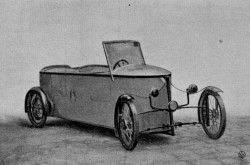

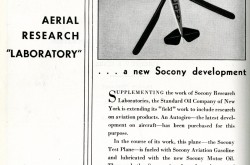

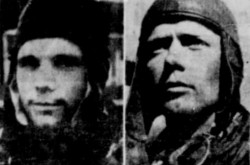


![Peter Müller at the controls [sic] of the Pedroplan, Berlin, Germany, March 1931. Anon., “Cologne contre Marseille – Le mystère du ‘Pédroplan.’ [sic]” Les Ailes, 2 April 1931, 14.](/sites/default/files/styles/thumbnail_7/public/2021-04/Les%20Ailes%202%20avril%201931%20version%20big.jpg?h=eafd0ed4&itok=WnBZ5gMf)
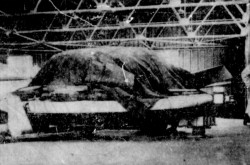
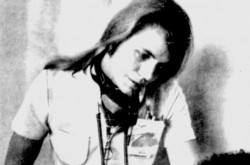
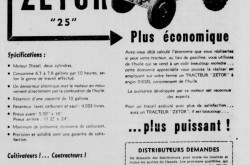
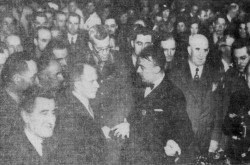
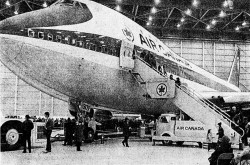
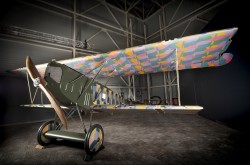

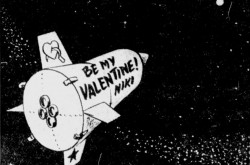
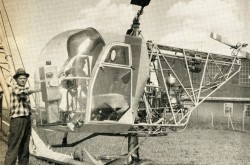

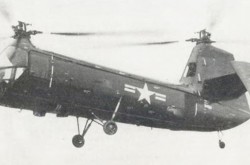
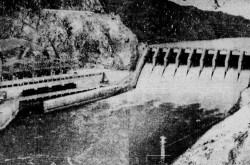
![One of the first de Havilland Canada Chipmunk imported to the United Kingdom. Anon., “De Havilland [Canada] DHC-1 ‘Chipmunk.’” Aviation Magazine, 1 January 1951, cover.](/sites/default/files/styles/thumbnail_7/public/2021-01/Aviation%20magazine%201er%20janvier%201951%20version%202.jpg?h=2f876e0f&itok=DM4JHe5C)
